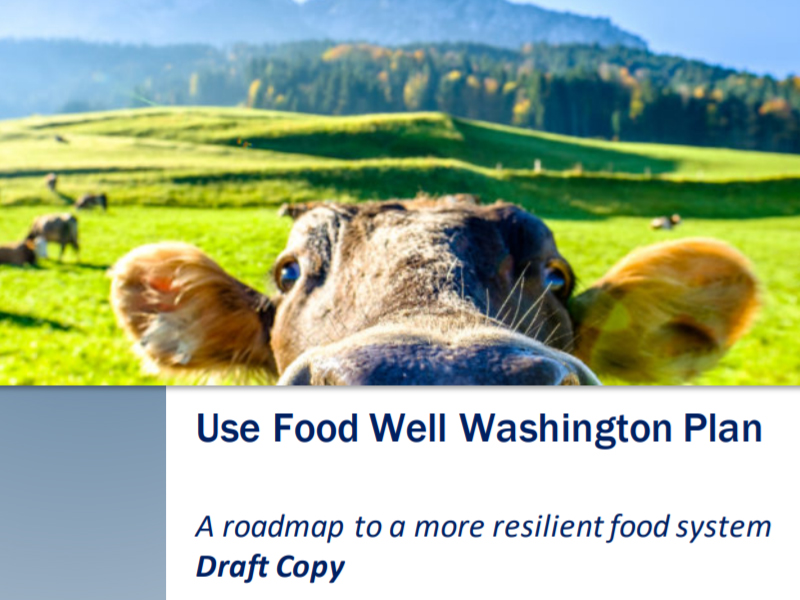
No other single resource is dumped in landfills across the United States more than food. Food waste is one of the greatest challenges of our time with significant environmental, social, and economic impacts.
Washington generates more than a million tons of food waste every year. About 35% of it is edible food going into landfills. Much of this material could have gone to a higher purpose, like feeding people, animals, or the soil. Better yet, had this material not been produced at all, the resources required to grow and produce it could have been used elsewhere.
Food waste is expensive, a misuse of resources, and an opportunity for us to do better. It effects all of us and Washington has committed to reducing it, significantly.
The draft Use Food Well Washington Plan is a roadmap to reaching the state’s goals of cutting food waste in half by 2030. The draft plan is now availible to the public for review and comment.
30 recommendations that work together
Growing food insecurity among Washingtonians makes this misuse of resources even more alarming. The Washington Department of Agriculture estimates that every year one in six of us— about 1.15 million people—receive food from emergency food providers, a number it says has likely increased to over 2 million individuals since the start of the COVID-19 pandemic.
The draft Use Food Well Washington Plan outlines a pathway to a more resilient food system through food waste reduction. The plan includes 30 recommendations to reduce food waste through prevention, rescue, and recovery.
In 2019, the Washington Legislature committed to statewide food waste reduction goals by unanimously passing ESHB 1114, now codified as 70A.205.715 RCW. This law required us to draft and adopt a plan to meet the food waste 2030 target of reducing food waste by 50% by 2030.
We worked in partnership with the state departments of Agriculture, Health, Commerce, the Office of Superintendent of Public Instruction, and more than 150 subject matter experts from across the state to develop the draft plan.
“It’s important to remember that no single solution exists to meet the 2030 goals, and comprehensive plan implementation is needed for benefits to be realized,” said Solid Waste Management Program Manager Laurie Davies. “The plan's recommendations are interconnected and rely on each other to succeed.”
Investing in critical infrastructure, reducing barriers through public-private partnerships, and comprehensively implementing the Use Food Well Washington Plan could reduce Washington’s food waste by 1.3 million tons. This would also reduce greenhouse gas emission by over 1.6 million metric tons - the equivalent energy needed to power over 712 thousand homes annually.
Full implementation of the plan's recommendations would create $4 in benefits for every $1 spent, and over time could potentially lead to more than $1 billion in annual net benefits largely realized by Washington’s private sector.
Review and comment by Sept. 10
The draft Use Food Well Washington Plan is a leap forward for the state, but we know that with public input it can be even better. You have until midnight on Friday, Sept. 10, to review and submit recommendations for the final plan.
Visit our e-comments page to review and comment on the plan, and learn more about food waste reduction. After comments are processed, we will work with our partners to deliver the plan and legislative report to the Washington Legislature in October 2021.

